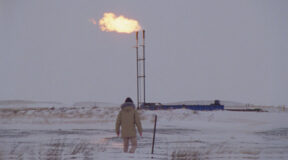WORKING during the colder months can be difficult, and it's even tougher if you have to work outside.
If this is you, you'll probably be wondering what your employment rights are and what your boss has to legally provide for you.
Here we explain what you need to know for working in cold, snow or icy weather.
What must your employer provide by law if you work outside?
Unfortunately, there’s no law for minimum or maximum working temperatures – but employers do have a duty of care to their employees, especially if working in snow and ice.
According to the Personal Protective Equipment at Work Regulations 1992, employers have to:
- Ensure any protective equipment is appropriate
- The equipment must be supplied for free and must be properly maintained
- Provide mobile facilities for employees warming up
- Encourage the consumption of hot drinks such as soup or hot chocolate
- Educate workers about the early symptoms of cold stress
- Incorporate more frequent rest breaks into the day
- Delay work until a warmer time of the year, so long as that doesn't compromise safety
What are the risks if you work outside?
There are plenty of conditions that can be caused by cold stress, and you should seek help from a GP and talk to your employer if you experience any of them.
These include:
Frostbite
This typically occurs if your skin is exposed to freezing temperatures.
It usually affects extremities, such as the hands, feet, ears, nose and lips, but can happen in any part of the body.
If your skin goes pale and numb, you should try to warm sufferers slowly indoors, but avoid putting them close to a heater or fire as this can make it worse.
Most read in money

Bargain supermarket crowned better than M&S for Xmas dinner – & it’s not Aldi

Mum shares £3 Home Bargains buy that dries clothes without a tumble dryer

Tesco customers fume as contactless payments down at UK supermarkets

Shoppers are rushing to buy cheapest Quality Street tubs for just £3.99
Chilblains
This is when you get small, itchy swellings on your skin that happen as a reaction to cold temperatures.
Thankfully these normally heal within a few weeks if further exposure to the cold is avoided.
You should seek help if you have severe or recurring chilblains and if they don't improve within a few weeks.
Hypothermia
Hypothermia takes place when your normal body temperature (37C) falls below 35C.
It can be extremely dangerous if not treated quickly, so you should call 999 if you notice the signs and if temperatures slip to under 32C.
Symptoms of hypothermia include shivering, cold and pale skin, slurred speech and confusion.
To help treat someone, you need to move them indoors, remove wet clothing, wrap them in blankets, give them a warm non-alcoholic drink if they can swallow normally, and give energy food that contains sugar if they can swallow normally.
What temperature must indoor workplaces or offices be?
The Approved Code of Practice suggests a minimum temperature of 16C for workplaces, or 13C if your work involves considerable physical activity.
The Chartered Institute of Building Services Engineers recommends above 13C for factories, 18C for hospitals and 20C for offices.
These temperatures are not legal requirements, but the employer has a duty to determine what is reasonably comfortable in the circumstances.
What can you do if your office is too cold?
While there is no specific law when it comes to temperature, employers still need to abide by health and safety laws.
This includes:
- keeping the temperature at a comfortable level
- providing clean and fresh air
To get something done about feeling cold, employees should band together and talk to their employer if the workplace temperature isn’t at a comfortable level.
If a number of staff bring their concerns to attention, employers will be forced to consider whether their current approach when it comes to heating and cooling the office is adequate, as part of their duty of care.
Source: Read Full Article






